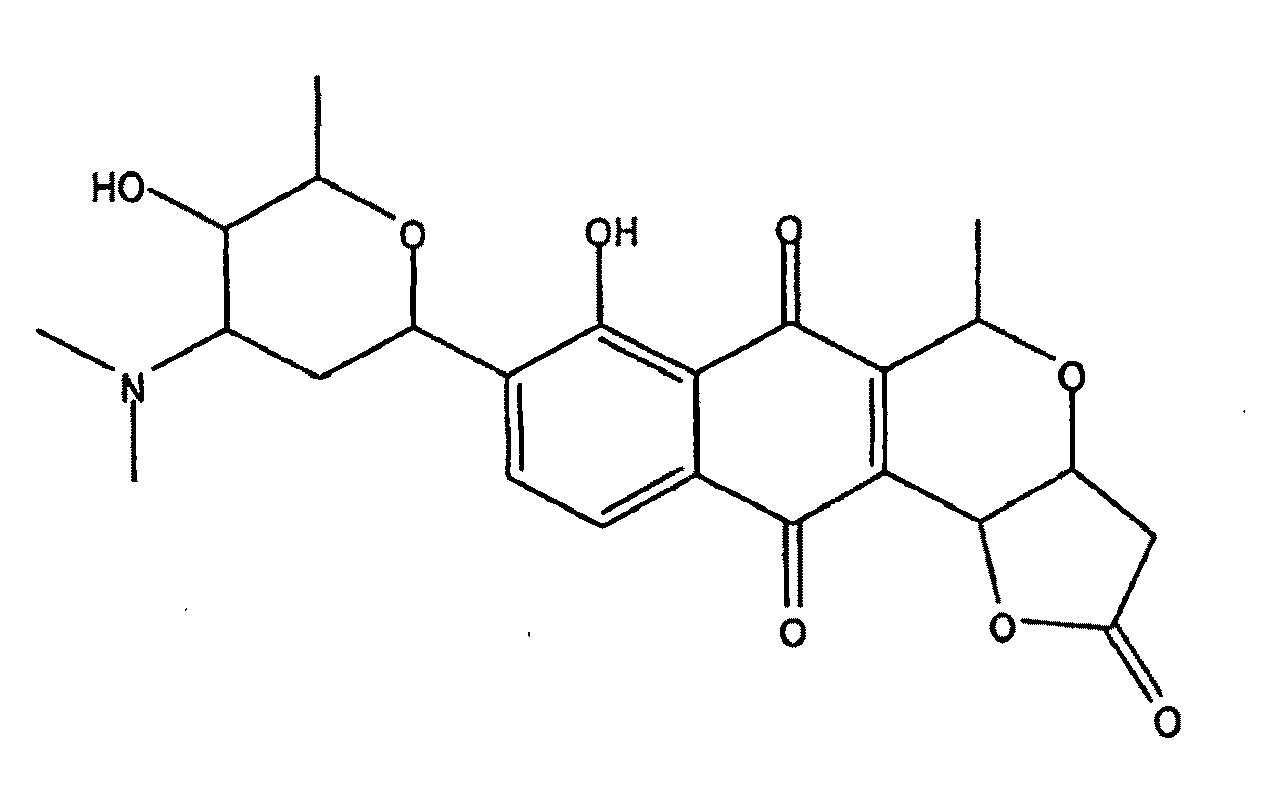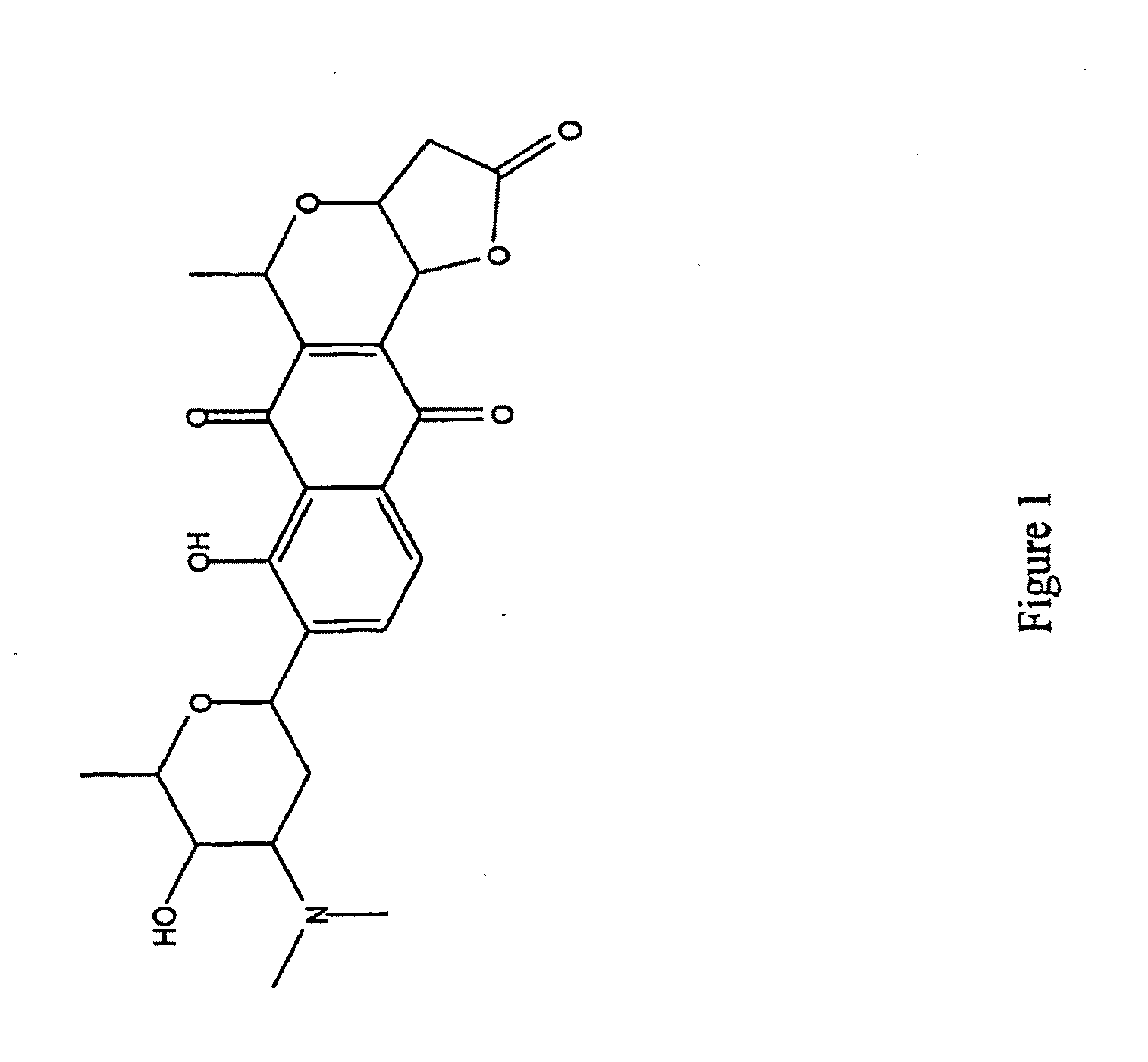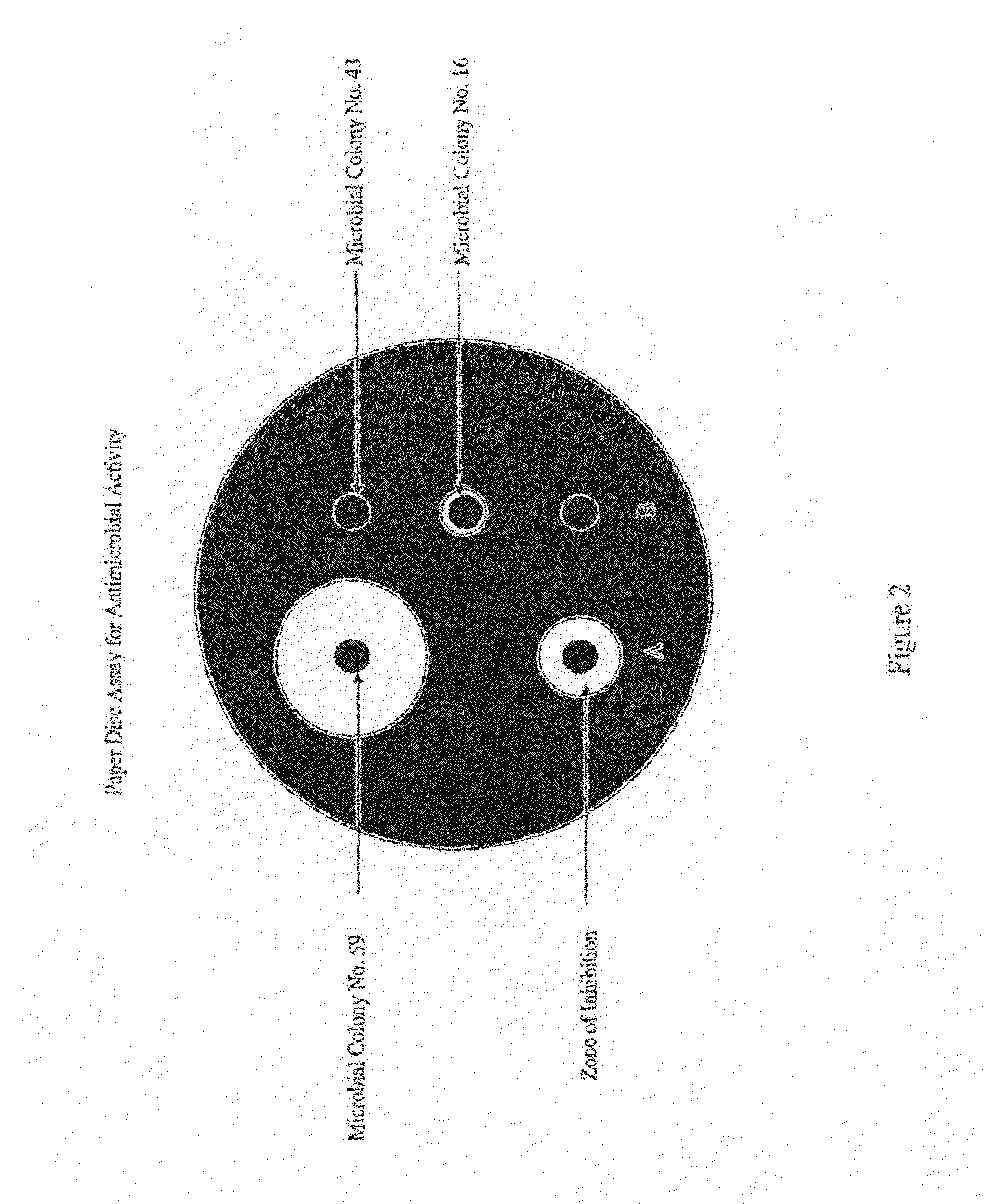Streptomyces-derived antimicrobial compound and method of using same against antibiotic-resistant bacteria
a technology of antibiotic-resistant bacteria and antimicrobial compound, which is applied in the field of antimicrobial compound, can solve the problems of inability to kill bacteria, no longer effective penicillin treatment, and no longer bind to pbp2
- Summary
- Abstract
- Description
- Claims
- Application Information
AI Technical Summary
Benefits of technology
Problems solved by technology
Method used
Image
Examples
example 1
Soil Preparation and Primary Screening
[0159]In separate experiments, 0.5 gram soil samples were diluted (20,000 fold) with distilled water. Aliquots of 100 μL, were inoculated onto twelve (12) agar plates as described above in order to perform primary screening for antimicrobial activity. The inoculated plates were allowed to incubate at 30° C. for two (2) weeks. The following microbial colonies were identified (in addition to the microbial colony no. 59) to exhibit a zone of inhibition against the neighboring colony on respective plates:[0160]i) microbial colony nos. 25 and 26 (zone of inhibition on Czapek agar plate);[0161]ii) microbial colony nos. 16 and 24 (zone of inhibition on Actinomycetes agar plate); and[0162]iii) microbial colony no. 37 (zone of inhibition on Bennett agar plate).
[0163]These positive microbial colonies were subsequently streaked for isolation on fresh plates and glycerol stocks were prepared for long term storage.
example 2
Secondary Screening
[0164]In separate experiments, secondary screening was performed on the microbial colony nos. 16, 24, 25, 26, and 37 (in addition to microbial colony no. 59). These microbial colonies were separately inoculated into respective seed culture media (2 mL) (i.e., microbial colony nos. 16 and 24 were cultured in the liquid version of Actinomycetes media; microbial colony nos. 25 and 26 were cultured in the liquid version of Czapek media; and microbial colony no. 37 was cultured in the liquid version of Bennett media).
[0165]The liquid cultures were allowed to incubate at 28° C. for 96 hours on a rotary shaker at 250 rpm. Aliquots (1 mL each) of culture broth were centrifuged (13,000 rpm; 2 minutes), dried in a SpeedVac, and resuspended in 100 μL of liquid culture media (10-fold concentrated). Antimicrobial activity using a paper disc assay was performed against Micrococcus luteus; E. coli; Candida albicans; and Pseudomonas aeriginosa as described above.
[0166]It was obse...
example 3
Tertiary Screening
[0167]In separate experiments, tertiary screening was performed on the microbial colony nos. 16, 25, and 37 (in addition to microbial colony no. 59). These microbial colonies were separately inoculated into respective seed culture media (2 mL) (i.e., microbial colony no. 16 was cultured in the liquid version of Actinomycetes media; microbial colony no. 25 was cultured in the liquid version of Czapek media; and microbial colony no. 37 was cultured in the liquid version of Bennett media).
[0168]The liquid cultures were allowed to incubate at 28° C. for 96 hours on a rotary shaker at 250 rpm. Aliquots (1 mL each) of culture broth were centrifuged (13,000 rpm; 2 minutes), dried in a SpeedVac, and resuspended in 100 μL of liquid culture media (10-fold concentrated). Antimicrobial activity using a paper disc assay was performed against MRSA and Staphylococcus aureus as described above.
[0169]It was observed that microbial colony nos. 16 and 25 were active against MRSA and ...
PUM
 Login to View More
Login to View More Abstract
Description
Claims
Application Information
 Login to View More
Login to View More - R&D
- Intellectual Property
- Life Sciences
- Materials
- Tech Scout
- Unparalleled Data Quality
- Higher Quality Content
- 60% Fewer Hallucinations
Browse by: Latest US Patents, China's latest patents, Technical Efficacy Thesaurus, Application Domain, Technology Topic, Popular Technical Reports.
© 2025 PatSnap. All rights reserved.Legal|Privacy policy|Modern Slavery Act Transparency Statement|Sitemap|About US| Contact US: help@patsnap.com



